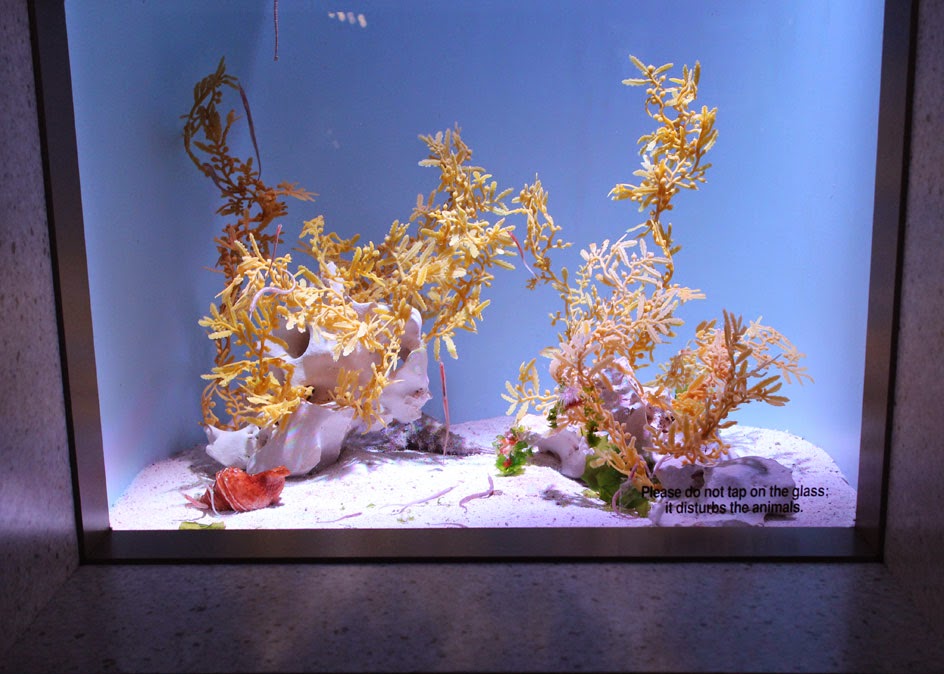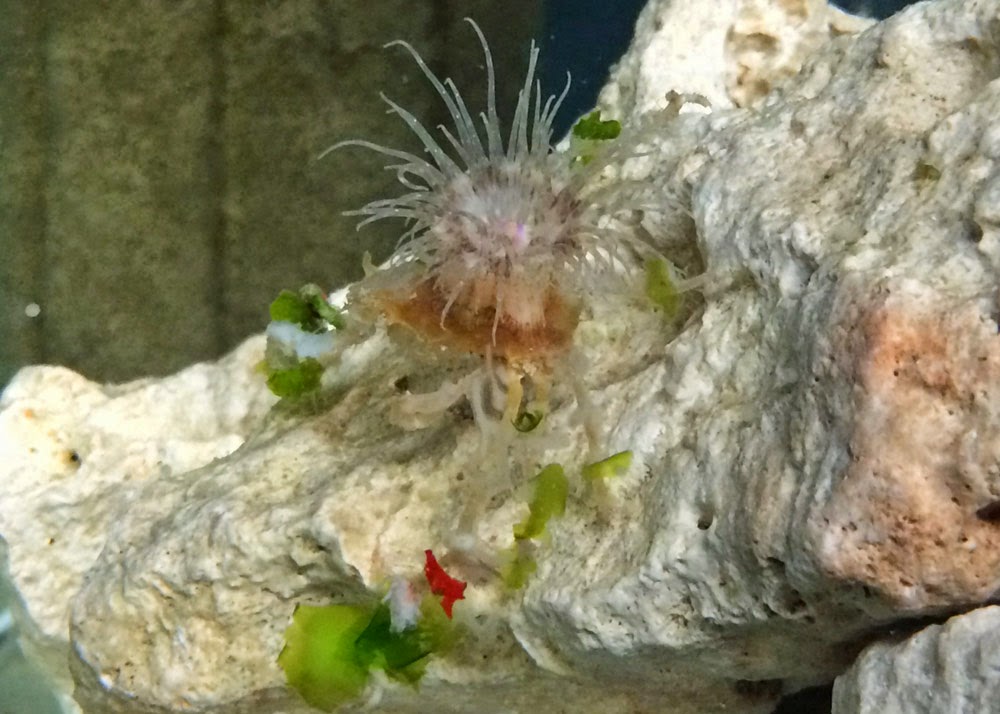The newest arrivals in the Jellies Exhibit are called flame jellies (Rhopilema esculentum). Looking at their reddish tentacles it's not hard to imagine how they got that name.
 |
| Flame jellies can be found in the Jellies Exhibit, downstairs from the Shark and Ray Touch Tank |
These stunning animals came from Chicago this past winter after the Shedd Aquarium's special jellies exhibit closed. It took the aquarists in Boston and Chicago several attempts to coordinate the transport around snow storms and Arctic blasts.
 |
| A behind-the-scenes tank let the flame jellies slowly acclimate to the Aquarium's water system during their quarantine. |
Finally they arrived on an overnight flight, where the jellies were whisked into special kreisel tanks behind the scenes for a routine quarantine period, giving them time to slowly acclimate to our water systems.
About 25 jellies went into the exhibit this week and they seem to be settling in beautifully.
This species lives for only about three months. But there are some polyps and very small medusae growing behind the scenes. The aquarists are hopeful they can grow more of this species for the exhibit! [Polyps? Medusae? Get a primer on sea jelly reproduction.] Interestingly, flame jellies are also raised in China for commercial aquaculture. Look for them on the menu at your local Chinese restaurant!
Learn more about jellies at the Aquarium with these posts:
- Need to start at the beginning? Here's sea jellies 101
- Check out lunchtime for the flowerhat jellies
- And sometimes jellies eat other jellies! [video]
- These immortal jellies will blow your mind
- Sometimes the jellies are outside the Aquarium in Boston Harbor
- Aquarium explorers even found jellies in the Phoenix Islands













